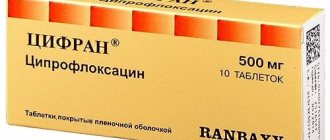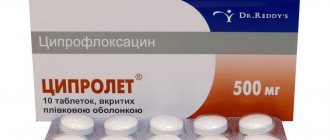Home | About us | Delivery | Advertisers | Login | Registration
Delivery on Sundays and holidays does not work!
- Medicines
- dietary supplementsVitamins
- Categories from A to Z
- Brands from A to Z
- Products from A to Z
- Medical equipment
- beauty
- Child
- Care
- Honey products appointments
- Herbs and herbal teas
- Medical nutrition
- Journey
- Making medicinesStock
Pharmacy online is the best pharmacy in Almaty, delivering medicines to Almaty. An online pharmacy or online pharmacy provides the following types of services: delivery of medicines, medicines to your home. Online pharmacy Almaty or online pharmacy Almaty delivers medicines to your home, as well as home delivery of medicines in Almaty.
my basket
Apteka84.kz is an online pharmacy that offers its customers medicines, medicinal and decorative cosmetics, dietary supplements, vitamins, baby food, intimate products for adults, medical equipment and thousands of other medical and cosmetic products at low prices. All data presented on the Apteka84.kz website is for informational purposes only and is not a substitute for professional medical care. Apteka84.kz strongly recommends that you carefully read the instructions for use contained in each package of medicines and other products. If you currently have any symptoms of the disease, you should seek help from a doctor. You should always tell your doctor or pharmacist about all the medicines you take. If you feel you need further help, please consult your local pharmacist or contact our GP online or by telephone.
© 2022 Pharmacy 84.
Tsiprolet
Ciprolet tablet film 500 mg x10, ATX code: J01MA02 (Ciprofloxacin) Active substance: ciprofloxacin Rec.INN registered by WHO
Dosage forms
CIPROLET®
tab., cover film-coated, 250 mg: 10 or 20 pcs.reg. No.: P N016161/01 dated 05/07/10 - Indefinitely
tab., cover film-coated, 500 mg: 10 or 20 pcs.reg. No.: P N016161/01 dated 05/07/10 - Indefinitely
Release form, composition and packaging
Tablets, film-coated, white or almost white, round, biconvex, with a smooth surface on both sides, at the break - a white mass with a slightly yellowish tint.
1 tab.
ciprofloxacin hydrochloride 582.211 mg,
which corresponds to the content of ciprofloxacin 500 mg
Excipients: corn starch - 27.789 mg, microcrystalline cellulose - 5 mg, croscarmellose sodium - 20 mg, colloidal silicon dioxide - 5 mg, talc - 6 mg, magnesium stearate - 4.5 mg.
Shell composition: hypromellose (6 cps) - 5 mg, sorbic acid - 0.072 mg, titanium dioxide - 1.784 mg, talc - 1.784 mg, macrogol 6000 - 1.216 mg, polysorbate 80 - 0.072 mg, dimethicone - 0.072 mg.
Clinical-pharmacological group: Antibacterial drug of the fluoroquinolone group Pharmaco-therapeutic group: Antimicrobial agent, fluoroquinolone
pharmachologic effect
A broad-spectrum antibacterial drug from the group of fluoroquinolones. Acts bactericidal. The drug inhibits the enzyme DNA gyrase of bacteria, as a result of which DNA replication and the synthesis of cellular proteins of bacteria are disrupted. Ciprofloxacin acts both on microorganisms that are reproducing and those in the resting phase.
Gram-negative aerobic bacteria are sensitive to ciprofloxacin: Escherichia coli, Salmonella spp., Shigella spp., Citrobacter spp., Klebsiella spp., Enterobacter spp., Proteus mirabilis, Proteus vulgaris, Serratia marcescens, Hafhia alvei, Edwardsiella tarda, Providencia spp., Morganella morganii, Vibrio spp., Yersinia spp., other gram-negative bacteria: Haemophilus spp., Pseudomonas aeruginosa, Moraxella catarrhalis, Aeromonas spp., Pasteurella multocida, Plesiomonas shigelloides, Campylobacter jejuni, Neisseria spp., some intracellular pathogens: Legionella pneumophila, Brucella spp. ., Chlamydia trachomatis, Listeria monocytogenes, Mycobacterium tuberculosis, Mycobacterium kansasii, Mycobacterium avium-intracellulare.
Gram-positive aerobic bacteria are also sensitive to ciprofloxacin: Staphylococcus spp. (S.aureus, S.haemolyticus, S.hominis, S.saprophyticus), Streptococcus spp. (St. pyogenes, St. agalactiae). Most staphylococci resistant to methicillin are also resistant to ciprofloxacin.
The sensitivity of bacteria Streptococcus pneumoniae and Enterococcus faecalis is moderate.
Corynebacterium spp., Bacteroides fragilis, Pseudomonas cepacia, Pseudomonas maltophilia, Ureaplasma urealyticum, Clostridium difficile, Nocardia asteroides are resistant to the drug. The effect of the drug against Treponema pallidum has not been sufficiently studied.
Pharmacokinetics
When taken orally, ciprofloxacin is rapidly absorbed from the gastrointestinal tract. The bioavailability of the drug is 50-85%. Cmax of the drug in the blood serum of healthy volunteers after oral administration of the drug (before meals) at a dose of 250, 500, 750 and 1000 mg is achieved after 1-1.5 hours and is 1.2, 2.4, 4.3 and 5.4 μg/ml, respectively.
Orally taken ciprofloxacin is distributed in the tissues and fluids of the body. High concentrations of the drug are observed in bile, lungs, kidneys, liver, gall bladder, uterus, seminal fluid, prostate tissue, tonsils, endometrium, fallopian tubes and ovaries. The concentration of the drug in these tissues is higher than in the serum. Ciprofloxacin also penetrates well into bones, eye fluid, bronchial secretions, saliva, skin, muscles, pleura, peritoneum, and lymph.
The accumulating concentration of ciprofloxacin in blood neutrophils is 2-7 times higher than in serum.
Vd in the body is 2-3.5 l/kg. The drug penetrates into the cerebrospinal fluid in a small amount, where its concentration is 6-10% of that in the serum.
The degree of binding of ciprofloxacin to plasma proteins is 30%.
In patients with unchanged renal function, T1/2 is usually 3-5 hours. The main route of excretion of ciprofloxacin from the body is through the kidneys. 50-70% is excreted in urine. From 15 to 30% is excreted in feces.
If renal function is impaired, T1/2 increases.
Patients with severe renal failure (creatinine clearance below 20 ml/min/1.73 m2) should be prescribed half the daily dose of the drug.
Indications
Infectious and inflammatory diseases caused by microorganisms sensitive to ciprofloxacin, including:
- respiratory tract infections,
- infections of the ENT organs,
- kidney and urinary tract infections,
- genital infections,
- gastrointestinal infections (including mouth, teeth, jaws),
- infections of the gallbladder and biliary tract,
- infections of the skin, mucous membranes and soft tissues,
- infections of the musculoskeletal system,
- sepsis,
- peritonitis.
Prevention and treatment of infections in patients with reduced immunity (during therapy with immunosuppressants).
ICD-10 codes
Dosage regimen
The dose of Tsiprolet depends on the severity of the disease, type of infection, body condition, age, body weight and kidney function.
For uncomplicated diseases of the kidneys and urinary tract, 250 mg 2 times a day is prescribed, and in severe cases, 500 mg 2 times a day.
For diseases of the lower respiratory tract of moderate severity - 250 mg 2 times / day, and in more severe cases - 500 mg 2 times / day.
For the treatment of gonorrhea, a single dose of Tsiprolet® is recommended at a dose of 250-500 mg.
For gynecological diseases, enteritis and colitis with severe course and high temperature, prostatitis, osteomyelitis, 500 mg 2 times a day is prescribed (for the treatment of ordinary diarrhea, a dose of 250 mg 2 times a day can be used).
The tablets should be taken on an empty stomach with sufficient liquid.
The duration of treatment depends on the severity of the disease, but treatment should always continue for at least another 2 days after the symptoms of the disease have disappeared. Usually the duration of treatment is 7-10 days.
Patients with severe renal impairment should be prescribed half the dose of the drug.
Table of recommended doses of the drug for patients with chronic renal failure:
Creatinine clearance (ml/min) Dose
>.50 Normal dosing regimen
30-50 250-500 mg once every 12 hours
5-29 250-500 mg once every 18 hours
Patients on hemo- or peritoneal dialysis after dialysis 250-500 mg 1 time per 24 hours
Side effect
From the digestive system: nausea, diarrhea, vomiting, abdominal pain, flatulence, anorexia, cholestatic jaundice (especially in patients with previous liver diseases), hepatitis, hepatonecrosis, increased activity of liver transaminases and alkaline phosphatase.
From the nervous system: dizziness, headache, increased fatigue, anxiety, tremor, insomnia, nightmares, peripheral paralgesia (anomaly in the perception of pain), sweating, increased intracranial pressure, anxiety, confusion, depression, hallucinations, as well as other manifestations psychotic reactions (occasionally progressing to states in which the patient can harm himself), migraine, fainting, thrombosis of the cerebral arteries.
From the senses: disturbances of taste and smell, visual impairment (diplopia, changes in color vision), tinnitus, hearing loss.
From the cardiovascular system: tachycardia, heart rhythm disturbances, decreased blood pressure, flushing of the face.
From the hematopoietic system: leukopenia, granulocytopenia, anemia, thrombocytopenia, leukocytosis, thrombocytosis, hemolytic anemia.
Laboratory indicators: hypoprothrombinemia, hypercreatininemia, hyperbilirubinemia, hyperglycemia.
From the urinary system: hematuria, crystalluria (primarily with alkaline urine and low diuresis), glomerulonephritis, dysuria, polyuria, urinary retention, albuminuria, urethral bleeding, hematuria, decreased nitrogen excretory function of the kidneys, interstitial nephritis.
Allergic reactions: skin itching, urticaria, formation of blisters accompanied by bleeding and small nodules that form scabs, drug fever, pinpoint hemorrhages (petechiae), swelling of the face or larynx, shortness of breath, eosinophilia, increased photosensitivity, vasculitis, erythema nodosum, exudative erythema multiforme , Stevens-Johnson syndrome (malignant exudative erythema), toxic epidermal necrolysis (Lyell's syndrome).
From the musculoskeletal system: arthralgia, arthritis, tenosynovitis, tendon ruptures, myalgia.
Other: general weakness, superinfections (candidiasis, pseudomembranous colitis).
Contraindications for use
- pseudomembranous colitis,
- pregnancy,
- lactation period (breastfeeding),
- children and adolescents up to 18 years of age,
- hypersensitivity to ciprofloxacin or other drugs from the fluoroquinolone group.
The drug should be prescribed with caution in cases of severe cerebral atherosclerosis, cerebrovascular accident, mental illness, convulsive syndrome, epilepsy, severe renal and/or liver failure, as well as in elderly patients.
Use during pregnancy and lactation The drug is contraindicated for use during pregnancy and lactation.
special instructions
Patients with epilepsy, a history of seizures, vascular diseases and organic brain damage due to the risk of developing adverse reactions from the central nervous system should be prescribed Tsiprolet® only for health reasons.
If severe and prolonged diarrhea occurs during or after treatment with Tsiprolet, the diagnosis of pseudomembranous colitis should be excluded, which requires immediate discontinuation of the drug and the appointment of appropriate treatment.
If pain occurs in the tendons or when the first signs of tenosynovitis appear, treatment should be stopped due to the fact that isolated cases of inflammation and even tendon rupture have been described during treatment with fluoroquinolones.
During treatment with Tsiprolet, it is necessary to provide a sufficient amount of fluid while maintaining normal diuresis.
During treatment with Tsiprolet, contact with direct sunlight should be avoided.
Impact on the ability to drive vehicles and operate machinery
Patients taking Tsiprolet® should be careful when driving a car and engaging in other potentially hazardous activities that require increased attention and speed of psychomotor reactions (especially when consuming alcohol at the same time).
Overdose Treatment: it is necessary to carefully monitor the patient's condition, perform gastric lavage, carry out the usual emergency measures, and ensure sufficient fluid intake. Using hemo- or peritoneal dialysis, only a small (less than 10%) amount of the drug can be removed. A specific antidote is unknown.
Drug interactions
When Tsiprolet is used simultaneously with didanosine, the absorption of ciprofloxacin is reduced due to the formation of complexes of ciprofloxacin with the aluminum and magnesium salts contained in didanosine.
The simultaneous use of Tsiprolet and theophylline can lead to an increase in the concentration of theophylline in the blood plasma, due to competitive inhibition in the binding sites of cytochrome P450, which leads to an increase in T1/2 of theophylline and an increased risk of developing toxic effects associated with theophylline.
Simultaneous use of antacids, as well as drugs containing aluminum, zinc, iron or magnesium ions, can cause a decrease in the absorption of ciprofloxacin, so the interval between the administration of these drugs should be at least 4 hours.
With the simultaneous use of Tsiprolet and anticoagulants, the bleeding time is prolonged.
With the simultaneous use of Tsiprolet and cyclosporine, the nephrotoxic effect of the latter increases.
Storage conditions and periods
List B. The drug should be stored in a dry place, protected from light, out of reach of children at temperatures up to 25°C. Shelf life: 3 years.
Conditions for dispensing from pharmacies The drug is dispensed with a prescription.











